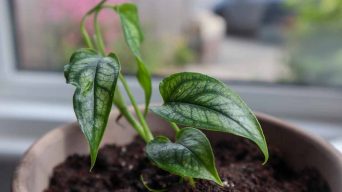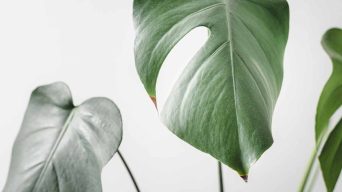Monstera Obliqua is a rare, delicate plant with more holes than foliage, highly sought-after due to slow growth, difficulty in propagating, and limited availability. Its high price is due to rarity, demand, and unique characteristics like variegation, making it challenging to obtain.
Known for its delicately perforated leaves and exotic allure, this tropical beauty’s scarcity and high demand have led to exorbitant price tags in the market.
If you’ve ever wondered what makes this stunning specimen so rare and expensive, or if you’re considering adding one to your collection, keep reading!
This article will delve into the factors contributing to Monstera Obliqua’s rarity, cost, care requirements and offer suggestions for affordable alternatives.
Factors Contributing To The Rarity And Cost Of Monstera Obliqua
Monstera Obliqua is one of the rarest and most sought-after plant varieties due to its unique characteristics, slow growth rate, difficulty in propagation, high demand from plant enthusiasts, and limited availability in the market.
The Unique Characteristics Of Monstera Obliqua
One of the primary reasons behind Monstera Obliqua’s rarity and high cost is its unique characteristics.
This tropical plant, native to Central and South America, has captured the hearts of plant collectors due to its stunning foliage with large holes or fenestrations that give it an otherworldly appeal.
Besides its captivating appearance, Monstera Obliqua also possesses aerial roots allowing it to climb trees or moss poles in search of bright indirect light, emphasizing its nature as a true epiphyte.
Another factor that sets Monstera Obliqua apart from other monstera varieties is the thinness of its leaves.
While many confuse this rare species with the more common Monstera Adansonii, there are critical differences between these two plants – particularly regarding their foliage texture.
The obliqua boasts paper-thin, almost translucent leaves dotted with sporadic yet elegant perforations – traits that have elevated this extraordinary plant into coveted status among houseplant enthusiasts and social media alike.
The Slow Growth Rate And Difficulty In Propagation
One major factor contributing to the rarity and high cost of Monstera obliqua is its slow growth rate.
This tropical plant, native to South America, requires a lot of patience from plant collectors as it takes longer than other Monstera varieties to develop its stunning variegated leaves fully.
The propagation process for Monstera obliqua is also quite challenging, further boosting its rarity and expense.
Plant lovers attempting to propagate this specimen may struggle with maintaining proper sphagnum moss or soil moisture levels, adequate humidity, and appropriate indirect light conditions—a major reason why Monstera obliqua remains a sought-after prize among rare houseplant enthusiasts.
High Demand From Plant Enthusiasts And Social Media
The high demand for Monstera Obliqua plants from plant enthusiasts and social media contributes to their rarity and high cost.
The variegated Monstera Obliqua leaves with white spots have gone viral on social media, creating a craze among plant lovers worldwide.
As a result, the demand for this tropical plant has surged, leading to limited supply and skyrocketing prices.
Many people are willing to pay a premium price for these rare houseplants as they want to add them to their collection or showcase them on various social media platforms.
Plant collectors are always searching for unique varieties to make their collection stand out, which only adds to the high cost of Monstera Obliqua plants.
Overall, the combination of social media hype and increased demand from avid collectors makes this variety so rare and expensive in the market.
Limited Availability In The Market
Monstera obliqua plants are highly sought after by plant collectors and enthusiasts. Still, their limited availability in the market makes them even more desirable.
Due to its rarity, Monstera obliqua is often called a “unicorn” plant that many people dream of owning.
The difficulty in propagation and slow growth rate of this tropical plant contributes to its scarcity in the market.
Furthermore, Monstera obliqua’s distribution is limited to certain areas in South America, with only a few specimens found in the wild.
This also adds to the challenge of obtaining this rare houseplant for those passionate about growing it.
As a result, finding Monstera obliqua for sale can be difficult, adding another layer of exclusivity that drives up its price even further among collectors and enthusiasts alike.
The Market Value Of Monstera Obliqua
The market value of Monstera obliqua varies across regions and sellers, with factors such as rarity, size, and aesthetics affecting the price.
Keep reading to learn more about this ultra-rare plant species’ investment value and care tips!
Varied Price Range Across Regions And Sellers
The price range for Monstera obliqua varies significantly across regions and sellers, depending on factors like size, variegation, and overall plant health.
To illustrate this, let’s take a look at the table below:
| REGION | AVERAGE PRICE | PRICE RANGE |
|---|---|---|
| North America | $200 – $300 | $100 – $500 |
| Europe | €150 – €250 | €100 – €400 |
| Asia | ¥15,000 – ¥25,000 | ¥10,000 – ¥40,000 |
| Australia | A$250 – A$400 | A$150 – A$600 |
It is important to note that these prices may not be consistent across all sellers within each region.
Individual sellers could price their Monstera obliqua plants differently based on factors such as demand, the rarity of the specific plant for sale, or their reputation in the market.
Therefore, potential buyers should remember that prices will vary, and thorough research is essential to ensure a fair deal.
Factors Affecting The Price
Several factors contribute to the high cost of Monstera Obliqua. These include:
- Rarity: Monstera Obliqua is one of the rarest plants in the world, making it highly sought-after by plant collectors and enthusiasts. The limited supply drives up its price.
- Demand: The high demand for Monstera Obliqua further drives up its price as plant lovers worldwide scramble to get their hands on this elusive plant.
- Propagation Difficulty: Monstera Obliqua is notoriously difficult to propagate due to its slow growth rate and demanding nature, so few plants are available for sale at any given time.
- Natural Mutation: Monstera Albo Variegata, a variegated form of the common Monstera Deliciosa plant, comes from a natural mutation that occurs in just one out of every 100,000 plants. This rarity contributes significantly to its high price tag.
- Region and Seller: The cost of Monstera obliqua can vary widely depending on where and who you buy it from. Some specialty nurseries or individual sellers may ask for exorbitant prices due to the rarity of the plant.
- Investment Value: Due to their rarity and high demand, some buyers see purchasing a Monstera Obliqua as an investment opportunity, another factor contributing to their high cost.
The Investment Value Of Monstera Obliqua
Monstera obliqua is not only a rare and beautiful houseplant, but it’s also a valuable investment.
As the demand for this plant continues to increase, so does its market value. Some specimens have been known to sell for over $20,000 or more.
Investing in Monstera obliqua requires patience and expertise since the plant’s cultivation process can be challenging.
The rarity and unique characteristics of the variegated Monstera make it an exclusive item for avid collectors, making it a sought-after asset with high resale value.
How To Obtain And Care For Monstera Obliqua
Learn how to obtain and care for the ultra-rare Monstera obliqua plant, including creating optimal growing conditions, proper watering and fertilizing techniques, repotting tips, and pest control.
Discover everything you need to know about this unique plant species that has become a hot commodity among passionate plant collectors.
Research Before Buying
Before purchasing a Monstera Obliqua, it’s crucial to do your research. This rare and delicate plant requires specific growing conditions that may not be suitable for every home.
You need to consider factors such as temperature, humidity levels, and lighting requirements before making a purchase.
Buying from reputable sellers with experience cultivating these rare plants is also essential. Don’t be lured in by low prices or promises of guaranteed variegation.
Many scammers are selling fake Variegated Monstera Obliqua plants on the market.
By doing thorough research beforehand, you can avoid disappointment and ensure the health and longevity of your prized plant.
Creating Optimal Growing Conditions
To ensure your Monstera obliqua thrives, creating the perfect growing conditions for this delicate plant is essential.
Here are some steps to follow:
- Soil: Use well-draining soil with many drainage holes and is light and aerated. Mix in sphagnum moss if necessary to help retain moisture without becoming waterlogged.
- Light: Monstera obliqua prefers bright, indirect sunlight, so place it near a window with filtered light.
- Temperature: Keep the plant in temperatures between 59-77°F. It doesn’t like drastic temperature changes or drafts.
- Humidity: Monstera obliqua thrives in high humidity levels (around 60-80%). You can increase humidity by placing a tray of water near the plant, misting it with water regularly, or using a humidifier.
- Watering: Water the plant consistently but not too often – the roots are sensitive to overwatering and will rot if left sitting in soggy soil for too long.
- Fertilizing: Feed your Monstera obliqua every few weeks during its growing season (spring and summer) with a balanced fertilizer diluted at half-strength.
Following these simple steps, you can create optimal growing conditions for your prized Monstera obliqua and enjoy its stunning beauty for years!
Proper Watering And Fertilizing Techniques
Proper watering and fertilizing techniques are essential for the optimal growth and health of Monstera Obliqua.
Here are some tips to help you care for your prized houseplant:
- Watering: It is important not to overwater Monstera Obliqua, as its roots can be sensitive and easily damaged. Wait until the top inch of soil feels dry before watering, then thoroughly soak the soil until water runs out of the drainage holes. During the summer, when the plant is actively growing, it may require more frequent watering, but still, ensure that the soil has dried out between waterings.
- Fertilizing: Monstera Obliqua should be fed once a month during its active growing season with a balanced fertilizer that contains equal amounts of nitrogen, phosphorus, and potassium. Avoid fertilizing during the winter months when growth slows down.
- Soil Conditions: The plant requires a high organic matter soil mix that is well-draining and well-aerated to maximize growth potential. This means using porous materials like peat moss or sphagnum moss in your potting mix to help retain moisture while allowing airflow.
- Humidity Requirements: Monstera obliqua thrives in high humidity environments such as those found in tropical regions where they originate from. Place a humidifier near your plant or frequently mist its leaves.
Following these proper watering and fertilizing techniques will help ensure your Monstera Obliqua remains healthy and vibrant for years to come!
Repotting And Pest Control
Repotting Monstera Obliqua is essential for its growth and health. Here are some tips to consider when repotting:
- Choose a pot one size bigger than its current container to allow room for growth.
- Use well-draining soil with sphagnum moss or peat moss, as Monstera obliqua prefers moist but not waterlogged soil.
- Water the plant before repotting to make removing it from the old container easier, and gently remove any excess soil around the roots.
- Place the plant in a new pot with fresh soil, and add more soil around the roots until it is level with the base of the stem.
- Water thoroughly and avoid direct sunlight until roots have re-established in their new environment.
Keeping an eye out for pests is crucial for maintaining Monstera Obliqua’s health:
- Check regularly for spider mites, mealybugs, scale insects, or whiteflies on both sides of leaves, as they can cause damage by feeding on them
- If pest infestation is detected, isolate affected parts of the plant and use insecticidal soap or neem oil spray to treat it until pests are eliminated
- Regularly clean leaves with a damp cloth or sponge to remove dust and prevent pests from settling down on them
Remember that prevention is better than cure – keeping your Monstera Obliqua healthy through proper care will reduce the chances of pest infestations happening in the first place.
Alternatives And Considerations For Monstera Obliqua
Consider exploring similar-looking plants, such as Monstera adansonii or Monstera siltepecana, or other rare and exotic plant varieties if you cannot obtain a Monstera obliqua.
Additionally, considering the value of Monstera obliqua as a collectible item is an alternative option for those interested in this unique and rare plant.
Similar-Looking Plants
Monstera obliqua can be easily mistaken for other plants, especially those in the Monstera genus. Some of these similar-looking plants include:
- Monstera adansonii, also known as the Swiss cheese vine, has smaller leaves and more holes than Monstera obliqua.
- Monstera siltepecana – also called the silver leaf plant- has darker green leaves with silver markings on them.
- Monstera standleyana, also known as Philodendron cobra or ribbon plant, has narrower and longer leaves than Monstera obliqua.
- Mini Monstera – also called Rhaphidophora tetrasperma, looks similar to the larger Monstera varieties but is much easier to care for and propagate.
It’s essential to research before purchasing any rare plant or seeking out a specific variety like Monstera obliqua to ensure authenticity and value for money.
By knowing the distinct characteristics of each type of plant, you can avoid paying a premium price for a similar-looking species.
Exploring Other Rare And Exotic Plants
While Monstera Obliqua may be one of the most popular and sought-after rare plants in the market, there are other exotic species that plant collectors and enthusiasts can explore.
Here are some different rare and unusual plant varieties to consider:
- Philodendron Spiritus Sancti – This plant, native to Colombia, is incredibly rare and almost impossible to find in the market. It has glossy, dark green foliage with intricate patterns and deep splits.
- Alocasia Dragon Scale – Also known as “Alocasia Baginda”, this plant has stunning textured leaves resembling dragon scales. It’s a slow grower and requires high humidity to thrive.
- Hoya Kerrii Variegata – This plant has heart-shaped leaves with lovely light green and creamy white variegation patterns. It’s a low-maintenance indoor plant that makes for an excellent gift.
- Ficus Benghalensis Audrey – Unlike its more common cousin, the Fiddle-Leaf Fig, this plant has smaller but more delicate leaves with a waxy texture. It grows well in bright indirect light and thrives in humid conditions.
- Calathea White Fusion – This rare Calathea variety has striking white-and-green foliage with unique patterns resembling feathers or fur. It’s a relatively low-maintenance houseplant but requires consistent moisture levels.
Exploring other exotic plants besides Monstera Obliqua can offer exciting opportunities to expand your collection while bringing new textures, colors, and patterns into your space.
Considering The Value Of Monstera Obliqua As A Collectible Item
Monstera obliqua has gained cult status among plant collectors and enthusiasts.
It is considered a highly valuable collectible item due to its rarity, unique characteristics, and high demand.
The variegated version of the plant is particularly sought-after by collectors, fetching prices that can reach thousands of dollars.
Some collectors view Monstera obliqua as an investment opportunity since it holds value over time. This is especially true for well-maintained plants with growth potential or producing rare leaves with interesting patterns.
However, potential buyers should also consider the cost and effort required to acquire and maintain this exotic plant species before investing their money.
Final Thoughts
In conclusion, the Monstera obliqua is a highly sought-after plant due to its unique characteristics, slow growth rate, and rarity.
Its high demand from plant enthusiasts and social media has made it an expensive addition to any collection.
Careful consideration must be taken when obtaining and caring for this rare plant, as it requires specific conditions and techniques.
As an investment in beauty and value, the Monstera obliqua is genuinely unique.
For those unable to obtain this particular variety, there are plenty of other rare and exotic plants to explore – but none quite like the magnificent Monstera obliqua.







